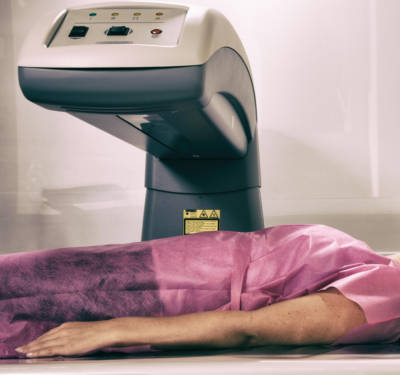Giving fragile bones a stronger foothold
Osteoporosis may be well-researched, but information and guidelines on it are lacking in the Middle East and Africa.
Published online 30 May 2016

Post-menopausal women and the elderly are particularly at risk of osteoporosis.
© Giovanni Gagliardi / Alamy Stock Photo
Osteoporosis affects more than 200 million people worldwide and leads to approximately 1.5 million fractures every year. In the West, diagnosis, treatment and research of the condition, which causes bones to become fragile, have increased. But less attention is given to it in the Middle East and Africa, with only a few countries in both regions providing accessible guidelines for its prevention and treatment.
Dietrich Büsselberg and Rajasree Vijayakumar from Weill Cornell Medicine in Qatar reviewed the latest findings on the prevalence, risk factors and lifestyle behaviours affecting osteoporosis1.
“Many articles are written [on osteoporosis] for experts in the field,” says Büsselberg. “By compiling this information, we give a wider audience the chance to understand which factors are involved in its development,” he says of the review, published in the Journal of Local and Global Health Science.
Approximately 30% of postmenopausal women in the US and Europe have osteoporosis. In Japan, an estimated 15 million people suffer from the disease, with only 20% receiving treatment for it. Data on osteoporosis in the Middle East and Africa is scarce, but a report published by the International Osteoporosis Foundation in 2011 said that available evidence indicates that both regions have very high incidences of osteoporotic fractures. Since age is a known risk factor for osteoporosis, incidences are destined to increase in these regions as the percentage of the population older than 50 rises to 40% by 2050.
At-risk populations include the elderly, post-menopausal women, and people with inherited DNA damage that interferes with the body’s absorption and processing of vitamin D. Many chronic diseases are also associated with bone loss including some endocrine diseases (such as hyperthyroidism), rheumatological conditions, chronic lung disease, gastrointestinal conditions associated with malabsorption, neurological diseases (such as multiple sclerosis), and some cancers.
Osteoporosis prevention can be done through a variety of lifestyle strategies. Since vitamin D is necessary for calcium uptake, which in turn is necessary for bone formation and remodelling, it is important to intake sufficient quantities of it in the diet (from egg yolks, milk, yoghurt, fish, cereals and green, leafy vegetables) or from dietary supplements. Exposure to healthy ultraviolet (UV) rays in the mornings and evenings is also important, since vitamin D can be formed in the skin by exposure to UV light. Cold weather, over-use of sunscreen, and cultural practices in which much of the skin is covered all interfere with UV absorption by the skin.
Other prevention strategies include avoiding heavy alcohol consumption and tobacco use, which can both lead to bone fragility, and doing high-impact (such as running and jumping) and weight-bearing exercises (such as lifting weights), which improve bone density.
“We hope that physicians will not only guide patients to a healthier life, but also test them more frequently for osteoporosis and treat them earlier,” says Büsselberg. “Also, policymakers need to realize that early prevention will save money and should thus prepare guidelines for the prevention and treatment of the disease. Hospitals need to be equipped with the instrumentation needed for its early diagnosis,” he says.Reference
- Vijayakumar, R. & Büsselberg, D. Osteoporosis: an under-recognized public health problem. J. Local Global Health Sci. 2016, 2 (2016). | article
DOI: 10.1038/qsh.2016.112

